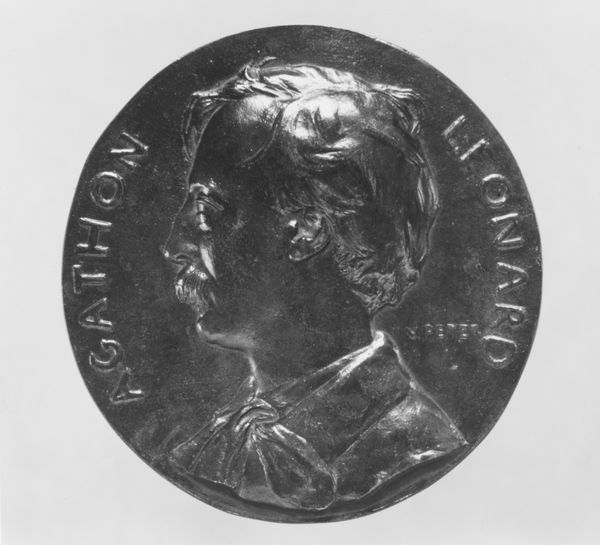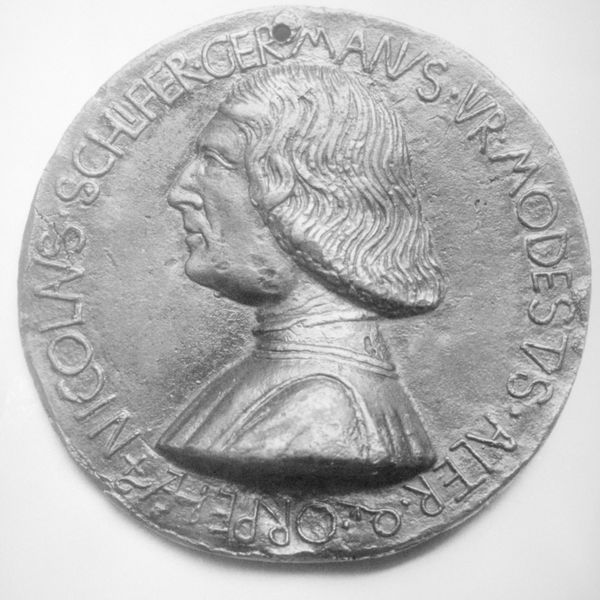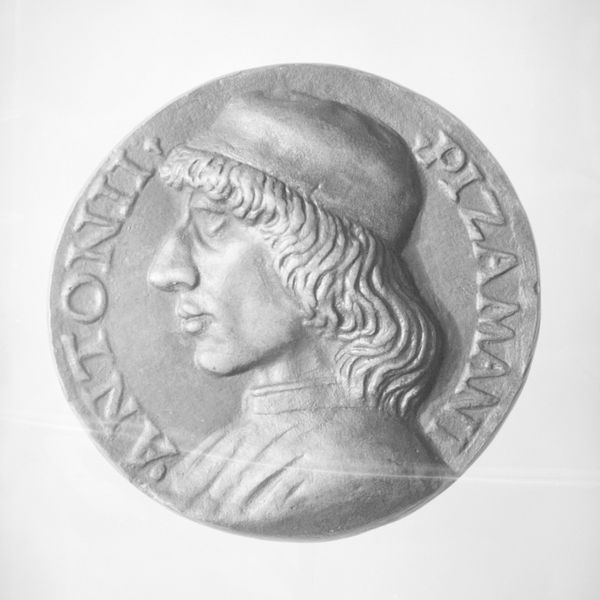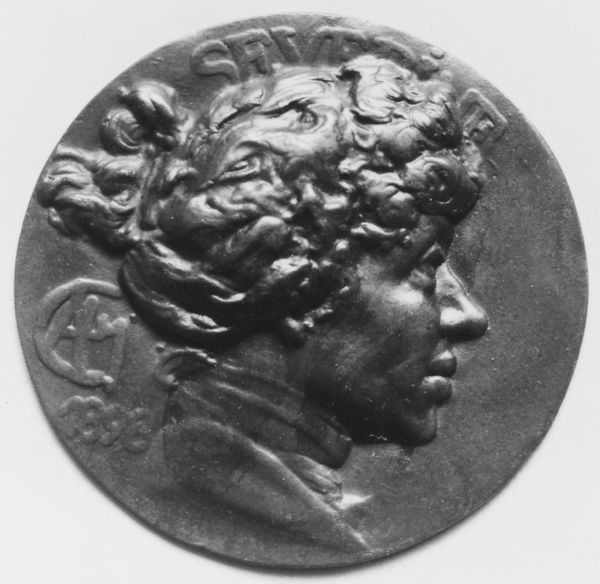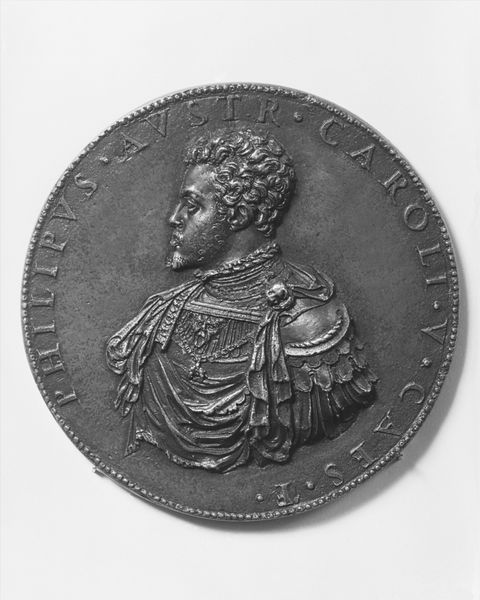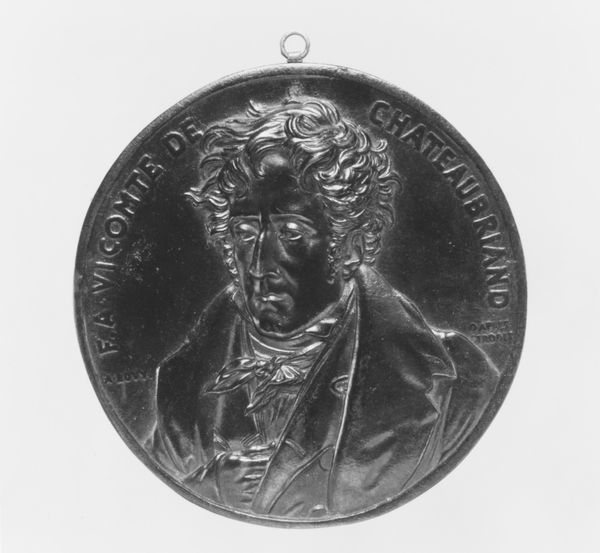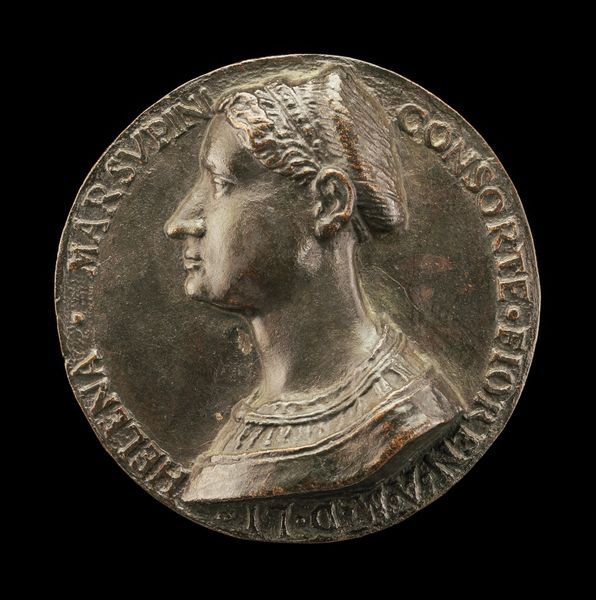
sculpture
#
portrait
#
medal
#
sculpture
#
sculptural image
#
portrait reference
#
framed image
#
sculpture
#
men
#
decorative-art
#
italian-renaissance
#
profile
Dimensions: Diameter: 95 mm
Copyright: Public Domain
Curator: The "Guarino da Verona, Humanist" medal, made between 1436 and 1446, sculpted by Matteo de' Pasti, presents a fascinating look at Renaissance portraiture. It resides here at The Metropolitan Museum of Art. What are your initial impressions? Editor: Immediately, I sense a certain stoicism, a gravity almost. The profile is so crisp, sharply defined against the round field of the medal, it feels incredibly focused, determined. Like peering back through time at unshakeable resolve. Curator: Absolutely. Profile portraits, especially in medals, evoke the Roman tradition, celebrating individuals and their achievements. The use of bronze also contributes to this sense of antiquity and timelessness. Doesn't it almost feel as though he’s gazing toward the future, convinced in his humanist project? Editor: It’s more than a gaze, it is almost prophetic, though also very carefully calibrated. Look at the placement of the inscription; it feels like it is not merely labelling him, but encasing him. Encapsulating an entire legacy and ideal through the frame and the typeface, as though solidifying the very essence of "Humanist." It goes beyond a simple nameplate. Curator: The inscription, “Guarinus Veronensis,” of course directly identifies him. But the intentionality here also goes beyond mere identification, to the way in which classical learning shapes one's character and even one's physical presence, right? I almost imagine that De' Pasti sculpted this not merely to portray him, but to celebrate learning as its own end, if that makes sense. Editor: Absolutely! Each aspect of his portrayal—his features, clothing, hairstyle even—becomes synecdochic; each aspect stands in for the Humanist. Consider, too, the long history of portrait medals as disseminators of ideals: how far they travel, what they signify to those who might receive them. The object and subject combine into a portable, reproducible idea. Curator: It’s the combination of permanence and circulation, right? It feels incredibly empowering. Almost like the perfect way to both make and immortalize an intellectual. What does the piece make you consider at its heart? Editor: More than an act of simple celebration, the piece stands as a beautiful artifact for thinking about enduring symbolic value, and about how people of the Renaissance saw themselves reflected in these miniature effigies, meant to survive lifetimes and connect communities. Curator: Nicely said. For me, it suggests an artistic testament, something about finding true individual expression and value during an historical epoch, something lasting which will never tarnish like bronze.
Comments
No comments
Be the first to comment and join the conversation on the ultimate creative platform.
